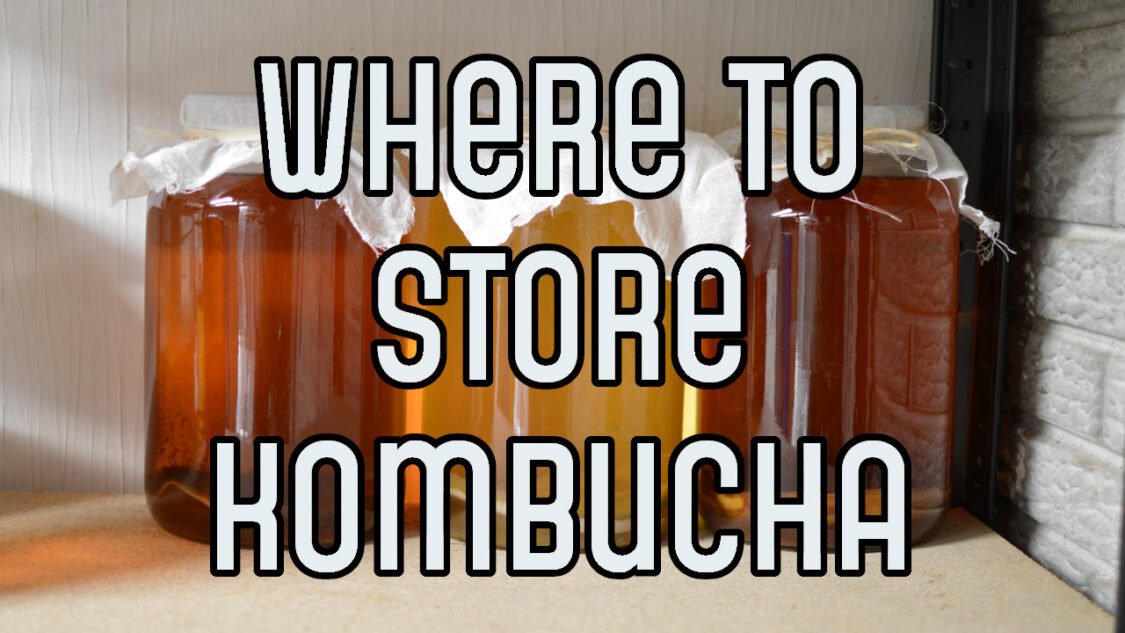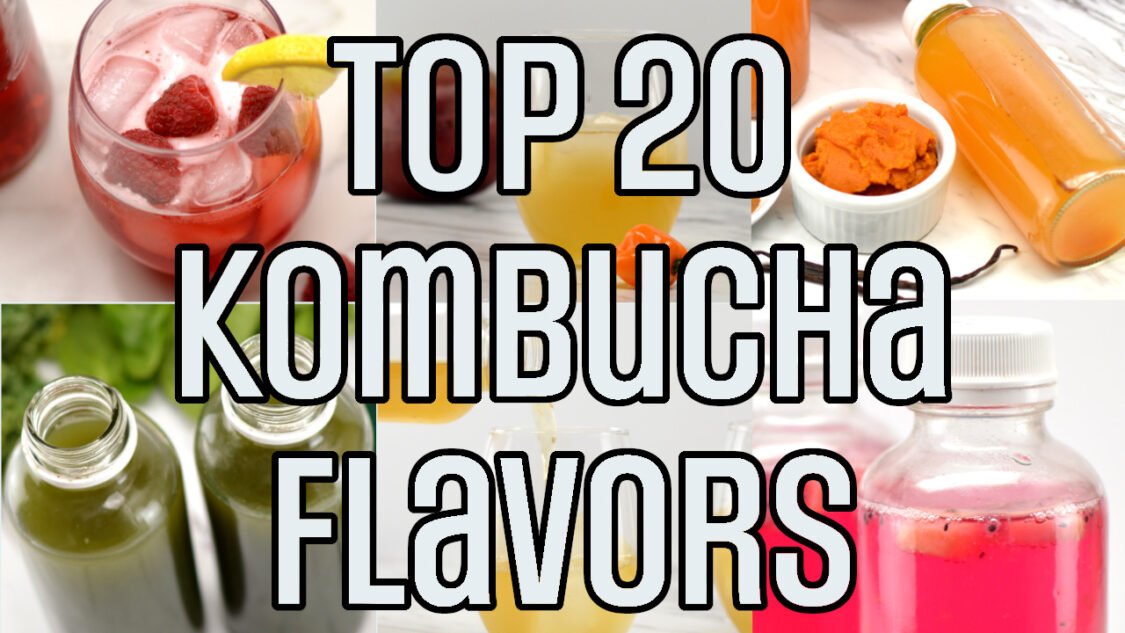What is a Kombucha SCOBY?
Many first time brewers ask ” What is a kombucha SCOBY” or Is a SCOBY the same as a Mother or Kombucha Pellicle?
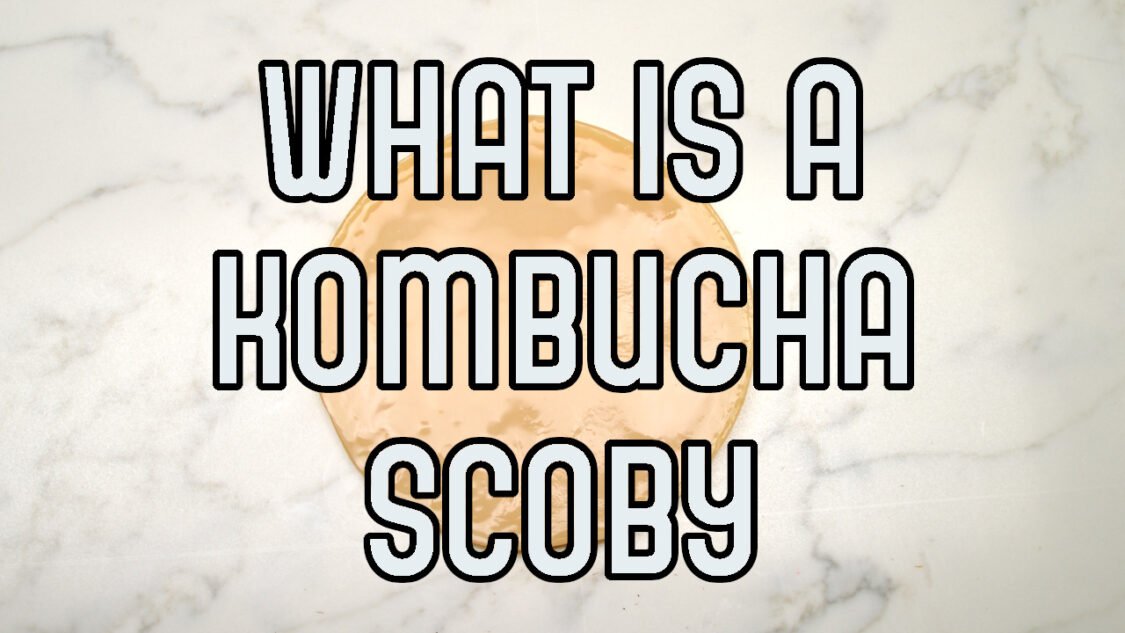
Few people argue that a kombucha SCOBY is attractive or appetizing. The fact is though that a healthy SCOBY makes great kombucha.
If you want to be successful making your own kombucha you are going to have to own and get comfortable handling your SCOBY.
What is a Kombucha Scoby?
SCOBY is stands for Symbiotic Culture Of Bacteria and Yeast. That is exactly what it is, the living home for the yeast and bacteria that transform sweetened tea into delicious, tart fizzy kombucha.
Similar to how sourdough bakers have a “starter” or “mother” which are a unique combination of yeasts that when fed flour and water produce sourdough bread. It’s similar for a SCOBY excepts it likes to be fed tea and sugar and produces delicious kombucha.
Other common names for a SCOBY are:
- The kombucha culture
- The pellicle (the scientific name for a kombucha SCOBY)
- Kombucha mother, mother SCOBY or mother culture
- Kombucha mushroom or SCOBY Mushroom (it is not a mushroom and not related to mushrooms even though it looks like a mushroom)
- The pancake
For a deeper dive into the composition of a SCOBY read what is a SCOBY made of?

What Is Kombucha?
Kombucha is a fermented beverage made from sweetened tea that is popular for its potential health benefits and unique taste.
Kombucha is made by fermenting sweetened tea with a symbiotic culture of bacteria and yeast (SCOBY). The fermentation process, aided by the SCOBY, produces a fizzy, slightly tangy beverage.
How Is Kombucha Made?
Kombucha is made by introducing a SCOBY into sweetened tea and letting it ferment for a week or more. The yeast in the SCOBY first breaks down the tea’s sugars and convert them into alcohol and carbon dioxide.
Next, good bacteria in the culture (also attached to the SCOBY) converts the alcohol into acids and other flavor compounds in much the same way bacteria converts apple cider into vinegar. The end result of fermentation is a beverage with a tangy, sweet and vinegar-like taste.
The bacteria also feed on some of the sugar, producing cellulose as a result. This cellulose builds up to form the thick, rubbery SCOBY on top.
The specific flavor profile and acidity depends on the mixture of yeast and bacteria used, how long it ferments (and at what temperature), the type of tea used and the addition of other ingredients like fruits, juices or herbs.
Kombucha fermentation increases the concentration of probiotics, beneficial bacteria in your digestive system with many positive health effects. Studies have linked regular probiotic consumption to reduced cholesterol levels, improved immunity and enhanced weight loss, among other benefits.
How Do I Pronounce SCOBY?
SCOBY is pronounced skow·bee and if it wasn’t an acronym, SCOBIE or even SCOBI would be a better way of spelling it.

What Does a SCOBY Do?
The SCOBY in kombucha primarily acts as a “floating home” that bacteria and yeast cling to and live on. You may see stringy, brown strands of yeast attached to a SCOBY or a soft layer of yeast at the bottom of your kombucha brewing vessel.
Both of these are OK and a sign of a healthy kombucha fermentation. Remember that yeast is the first player in the fermentation of tea into kombucha.
People have also theorized that the SCOBY forms a barrier across the surface of the liquid to protect it from contaminants in the air above. This helps prevent dirt, fruit flies and other unwanted (bad) bacteria or microbes from coming into contact with the fermenting kombucha.
The SCOBY can sometimes develop mold, so it’s possible that it also acts as a defense from the liquid below becoming contaminated as well (always discard your SCOBY and kombucha if you get mold)
Where Does A SCOBY Come From?
A SCOBY s typically obtained from another batch of kombucha or from a reliable source. Here are a few ways to get a SCOBY:
- Purchase a starter kit: You can buy a kombucha starter kit from various sources, which usually includes a mature SCOBY along with the necessary instructions and sometimes some starter liquid from a previous batch.
- Get it from a fellow kombucha brewer: If you know someone who brews their own kombucha, they may be willing to share an extra SCOBY with you.
- Grow your own SCOBY: You can actually grow a SCOBY from a store-bought bottle of raw, unflavored kombucha. This method involves allowing the live cultures in the bottle to multiply and form a new SCOBY. (more on this later)
Do I Need a SCOBY to Make Kombucha?
While using a SCOBY is the most common method for making kombucha, it’s not necessary to have a SCOBY.
I have made kombucha without a SCOBY side-by-side with a batch using a SCOBY and the differences were minimal.
I’ve also written an in-depth post called Do I Need A SCOBY for more information.

What should my SCOBY look like?
SCOBYs are like snowflakes; no two are the same! Temperature, humidity, ingredients, brew vessels, tea used and age can all impact how your SCOBY grows and looks.
Some SCOBYs will be perfectly white and round, while others will be brown and sludgy (the brown stringy bits on bottom are simply yeast – nothing to worry about). There’s no “perfect SCOBY”! I have found that the color of the tea impacts the color of the SCOBY.
My SCOBYs have ranged from almost pure white (from green tea) to tan/brown (from black tea) and even pink from butterfly pea flower tea.
The appearance of the SCOBY can vary, but it’s typically dense, round, rubbery and opaque with a mild, vinegar-like smell. The SCOBY will typically float on the surface; however, sometimes your SCOBY will sink. Don’t worry, this is completely OK.
Look out for mold or a strong cheese-like odor, which may indicate that the SCOBY is decaying and needs to be discarded.
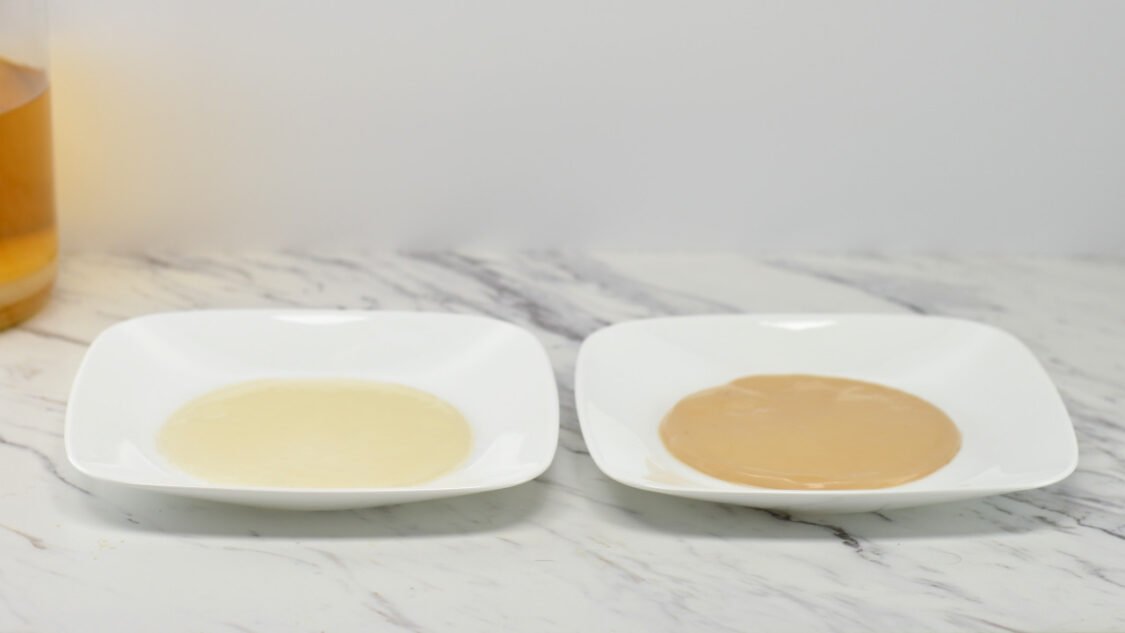
Can you grow your own SCOBY?
A SCOBY is a naturally occurring part of kombucha brewing which is constantly renewing itself. A new SCOBY will often grow on the surface of the old one when you batch of kombucha.
Many times it will be attached to your original “mother” SCOBY and appear as a thin layer on top. If they’re not attached, that’s perfectly fine too and you can separate them from each other to give to a friend start another batch or start a SCOBY hotel ( a collection of Kombucha SCOBYs stored for future use.)
You’ve also likely seen a tiny newly-forming SCOBY inside a bottle of kombucha you’ve bought. It appears as a tiny little blobby thing inside inside the bottle. This ability of the the SCOBY to constantly regenerate and clone itself is what makes it possible for us to grow a new SCOBY from scratch.
Pre-made kombucha (either from a friend or store bought) contains all of the bacteria and yeasts needed to create a new SCOBY in 1 to 4 weeks. Read about how to grow a SCOBY.
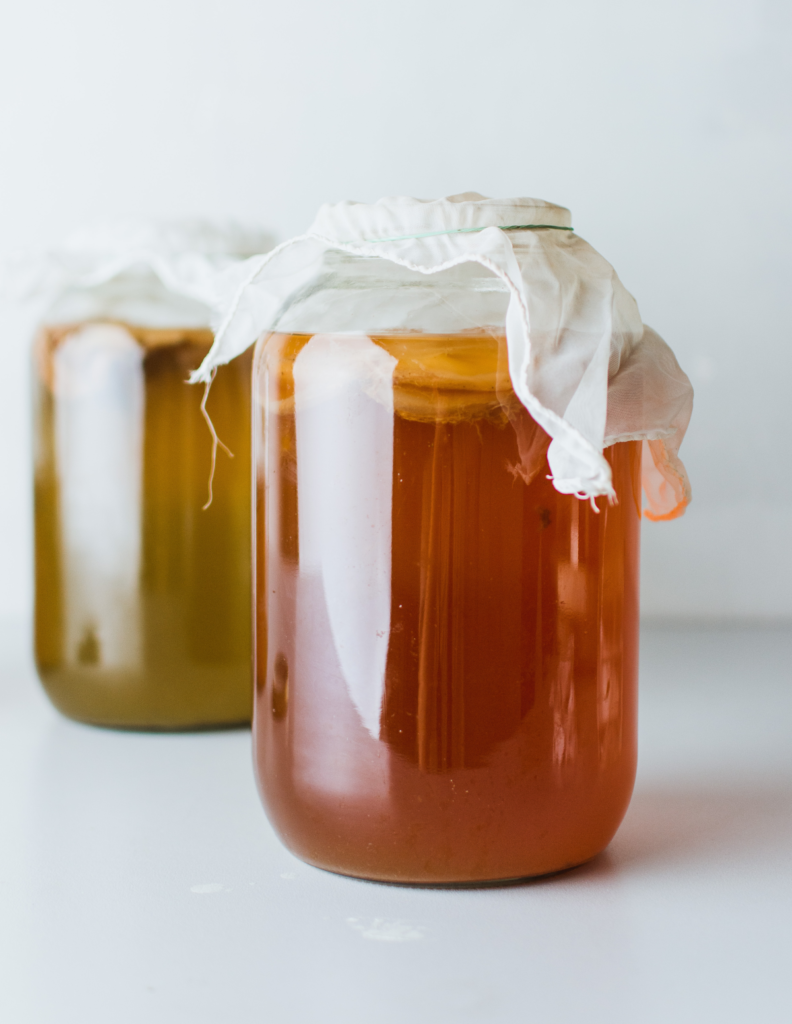
How do I use a SCOBY to make Kombucha?
Once you have a SCOBY you are ready to start making your own fresh, delicious kombucha with it!
Here is a quick overview of the steps:
Brew sweetened tea: Black or green tea is commonly used, but other types can be used as well. The tea is brewed and then sweetened with sugar.
Add SCOBY: Once the sweetened tea has cooled, your kombucha SCOBY is added to the mixture.
Ferment: The sweetened tea and SCOBY are left to ferment for a period of about one to two weeks. During this time, the bacteria and yeast in the SCOBY consume the sugar in the tea, producing organic acids, carbon dioxide, and a small amount of alcohol.
Flavoring (optional): After the initial fermentation, the SCOBY is removed and the kombucha can be flavored with additional ingredients such as fruit, herbs, or spices for added taste.
Bottling: The finished kombucha is then strained, and the liquid is bottled. The sealed bottles are left to undergo a short secondary fermentation, which creates carbonation.
Refrigeration: Once the desired level of carbonation is achieved, the kombucha is typically refrigerated to slow down the fermentation process and improve its shelf life.
See my full guide on how to make kombucha and kombucha flavoring FAQ for a deeper dive into the process.
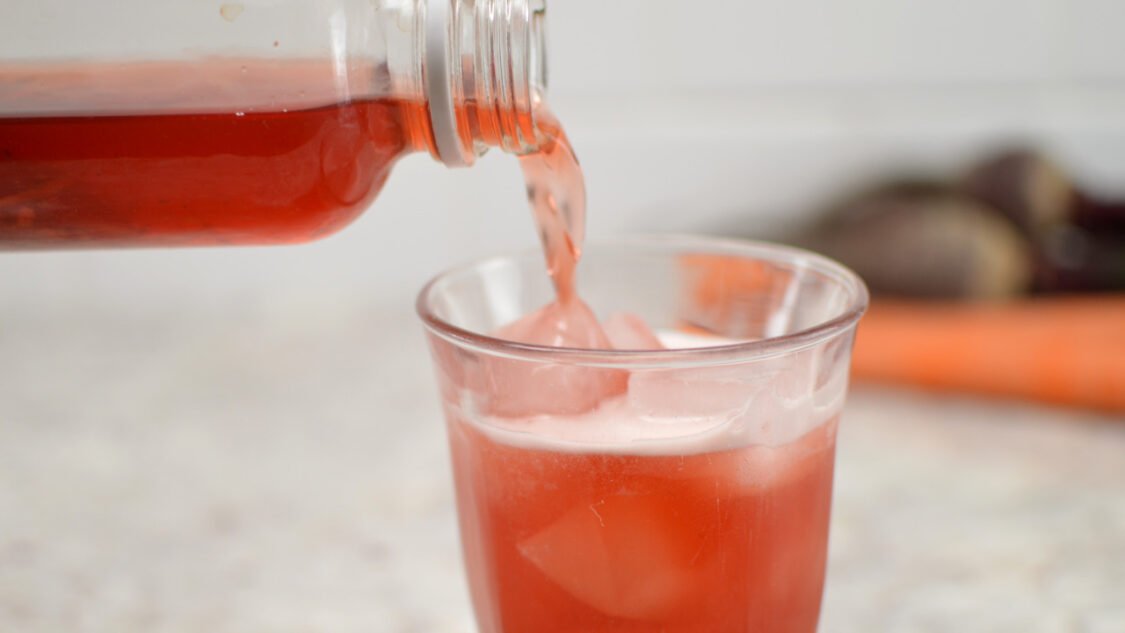
Common SCOBY Questions
How Long Does a SCOBY Last?
SCOBYs don’t have a shelf life and can live practically forever if fed and cared for.
How Do I Feed My SCOBY
Feed a SCOBY by regularly placing it in a solution of sweetened tea and using it to make kombucha
Should I Refrigerate My SCOBY?
A SCOBY is generally not meant to be refrigerated, especially when actively used in the process of fermenting kombucha. The SCOBY relies on a stable environment to maintain the fermentation process. I prefer to keep mine at room temperature
Is a Kombucha SCOBY Edible?
The SCOBY used in brewing kombucha is technically edible, but its texture and taste might not be very appealing.
Some people do consume small pieces of SCOBY or incorporate it into recipes, such as blending it into smoothies or using it as a base for fermented snacks.
Note that the SCOBY can be quite strong in flavor and has a unique, tangy taste. The texture can be chewy and may not be to everyone’s liking.
Add Your Heading Text Here
A Kombucha SCOBY baby, also referred to as a “daughter” or “pup,” refers to a new layer or formation that grows on the surface of the original SCOBY during fermentation. As the kombucha ferments, the SCOBY produces additional layers, and these layers can separate, forming what is often referred to as a “baby” SCOBY.
The baby SCOBY is a new colony of bacteria and yeast that can be used to brew more kombucha. It’s a natural part of the fermentation process and indicates that the SCOBY is healthy and active.
When you see a new layer forming, it can be carefully peeled off and used as a starter for a new batch of kombucha.
Helping you learn to brew kombucha, find inspiration for new kombucha flavors and use kombucha to make kombucha mocktails


